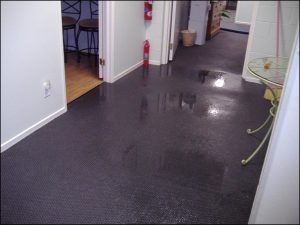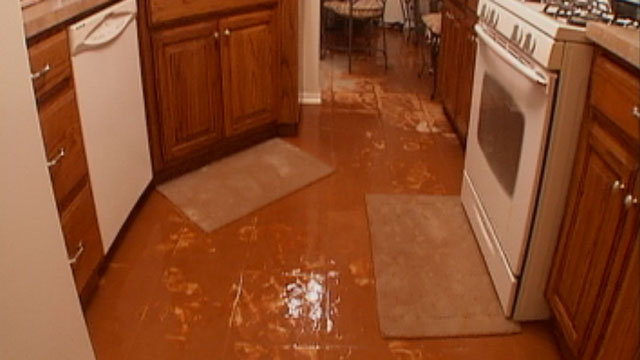How do you really feel in relation to How to protect your home from water damage?

Water damage to your residence can be devastating. If it is very severe, it may impact the residence's structure.
When flooding or various other significant water damage affects your house, you can take steps. This guide will help you know how you can find the cause of the damage and rectify it. You will also learn what you can do to restore or repair parts that may have been damaged.
Actions to take after water damage to your residence
When you locate that there has actually been water damage to your residence, take the adhering to actions:
Locate the resource of the damages
If you do not find the cause of those water stains or horrible smells, you could encounter extra troubles from that resource. Discovering the source might be tricky if you are not an expert, however you can do it.
Locate the damages and determine if any kind of pipes pass that route. Windows can enable rain to come in and also damages parts of the residence.
Often, the cause of the water damage could be evident-- for example, a flood.
Manage the root cause of the damage
Fix it or call a knowledgeable emergency plumbing professional to fix it if the reason is a burst or dripping pipe. If it is a home window that enables rainfall in, keep in mind to close the window when rainfall falls or close it totally.
If you've reached this phase, keep in mind that you have actually done most of the effort.
Protect Yourself, your Household, and also your valuables
You need to keep your family members and other crucial valuables risk-free if the flooding is serious. Examine to see that your animal is fine. Examine your food storage as well as various other vital parts of your home.
Plan for Repair Service and also Restoration
Depending on the part of your home that has actually been harmed, you can take different steps to repair it.
You might have to reduce the broken component out and replace it with a new component if your drywall has actually taken some water damage. If essential, you may also have to replace roof shingles and Site ceiling boards. Floors are frequently much easier to bring back, specifically if they are constructed from floor tile.
Repair as much as you can and replace the rest.
If the damage is extremely serious, call Your Insurance Coverage Business
If the damage to your house is severe and causes damage to your property, call your insurance company. The firm will certainly send out somebody to manage the repair work and restoration if your residential or commercial property is covered.
Conclusion
Water damage to your house can be ruining, yet with the appropriate steps, you can press with it. Discover the cause of the damages, manage it as well as repair damaged parts of your house. Do not fail to remember to call the insurance provider.
Think about calling a professional to aid with it if you aren't sure how to do any of these.
Water damage to your residence can be ravaging. You can take steps when flooding or various other considerable water damage affects your residence. Windows could permit rainfall to come in and damages parts of the house.
Water damage to your residence can be devastating, yet with the appropriate actions, you can press through it. Locate the cause of the damage, bargain with it as well as fix broken parts of the residence.
5 Steps to Take If Your House Has Ceiling Water Damage
Ceiling water damage can happen in a variety of ways, but what should you do? This guide lets you know what to do if your house has ceiling water damage, what causes it, and signs of water damage.
Each year, there are approximately 1 in 50 homeowners in the United States file a water damage claim, and many of these claims have to do with ceiling water damage.
Have you been part of this group? Are you dealing with ceiling water damage currently?
If your ceiling has been damaged by water, it's important to act quickly and address the problem as soon as you can. Read on to learn about the specific things you ought to do to correct this issue and restore your ceiling material.
Prevent Future Damage
The first thing to do when you notice signs of water damage is to try and minimize the spread of the initial damage. At first, this might feel like an impossible task. Let's use the example of a leaking ceiling, though, to make it seem more manageable.
Let's say you find that your ceiling is leaking and water is getting all over your furniture. Before you do anything else, move the furniture out of the room so that it can start to dry and put down a bowl or bucket to catch the water.
Identify the Source
Next, once you've stabilized the situation, you can start looking for the source of the water damage. Is it a leaking pipe? A leak in your roof?
You might not always be able to tell precisely where the water is coming from, but you should still do your best to track it down. Keep in mind, too, that water can travel very far from an initial leak. Because of this, you might have to do some digging to identify the original water source.
Depending on the source of the leak, once you find it, you might be able to at least temporarily stop it. For example, you could patch a hole in the roof to stop more water from coming in. Or if it’s accessible, you should turn off the water if it is caused by an overflow or a leaky pipe.
Dry Out the Area
While you're working on identifying the source of and stopping the leak, you should also recruit others in your home to try and dry out the area. Laying down towels, opening up windows, pointing fans at the wet areas — all of this will help to prevent mold growth and minimize the damage caused by the water. For the best results, consider renting some high-volume fans and dehumidifiers and point the fans up toward the ceiling.
Call in a Professional
In most cases, when you're dealing with water damage, it's best to call in an expert for backup. Reach out to a flood and water damage specialist who can help you get to the root of the issue, identify what, specifically, caused the problem, and help you come up with a plan to solve it.
Trying to handle water damage all on your own can be tricky, and you might even end up doing more harm than good if you're not careful. To avoid making potentially expensive mistakes, reach out to a professional as soon as possible.
Repaint or Replaster
Once the water damage is fixed, your last job is to repaint or replaster the damaged parts of your ceiling. Sometimes, this is as simple as doing a bit of spot-spackling and painting. In other cases, though, you might need to replaster and repaint the whole ceiling.
Don't be afraid to contact a professional for help with this step, too. Again, if you don't know what you're doing, particularly when it comes to a full ceiling replastering or repainting project, you could accidentally cause more damage. The professional remediation team at Rock Emergency in Albany can handle both for you. Better yet, they will even work with your insurance company so you don’t have to!
It's always better to be safe than sorry, but this statement is even more true when you're dealing with something as important as your ceiling.
https://rockemergency.com/flood/5-steps-to-take-if-your-house-has-ceiling-water-damage/

Do you like more info about Water Damage Restoration? Write a comment directly below. We will be glad to find out your suggestions about this blog. We are looking forward to see you back again in the future. Sharing is good. You just don't know, you might be helping someone out. I am grateful for your time. Don't forget to visit our blog back soon.
Comments on “What To Do When you Go back to your Property After a Flood.”